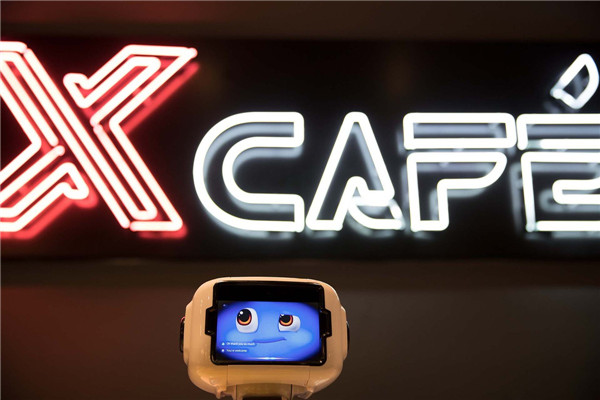Tianjin Binhai: the rise of a smart, open and livable maritime gateway
Updated : 2019-06-28
Print PrintVanguard of smart city

A robot receptionist at JD Restaurant in Binhai New Area. [Photo/People's Daily Online]
In Tianjin Binhai-Zhongguancun Science Park, a typical day has just started. Drone couriers speedily send parcels to designated positions, while children play in the ocean with portable underwater scooters. Robotic hands sort bookshelves in a smart library, while several androids answer questions at the information desk.
None of these high-tech scenarios would have been possible had Binhai New Area not prioritized technological innovation. Due to its favorable talent policies and excellent business environment, the area harbors not only world-leading tech behemoths including a national supercomputer center, whose exascale supercomputer Tianhe-3 is expected to be the world's fastest of its kind by June, 2021; but it also provides a hotbed for start-ups such as Sublue, an emerging tech star which produces a range of underwater robots, vehicles and gliders.
"The New Area has a complete and well-rounded industrial ecosystem, aiding high-tech companies in research and production, as well as providing talents from all over the world easy access to settle down here," said Wang Lufei, manager of Sublue.
Binhai New Area is turning into a northern technological cluster. By the end of 2017, more than 464 municipal-level and above research centers, including 111 key laboratories and 241 technological centers of major companies, had been established in the area. The size of its intelligent industry is expected to reach 50 billion yuan ($7.84 billion), and also fulfill its goal of achieving more than 2,000 independent intellectual property rights by 2020.
Efy technology, a tech company established in the new area, is now a leading power in the global drone market, providing logistics services for companies all over the world.
"Our company has invented a smart drone control system, through which drones can take off and send parcels without any human participation. Over 100,000 drones can be controlled by one center at the same time, providing services including disaster relief and business performance," said Xiao Ling, a member of staff from the company.
"There are several science parks like ours, where governmental policies and support have enabled them to create core technologies in multiple areas," Zheng said, adding that smart technologies are crucial for the area's future development.